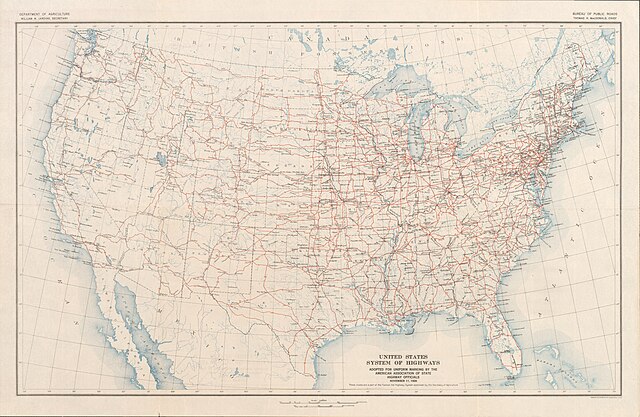U.S. Route 66 or U.S. Highway 66 was one of the original highways in the United States Numbered Highway System. It was established on November 11, 1926, with road signs erected the following year. The highway, which became one of the most famous roads in the United States, ran from Chicago, Illinois, through Missouri, Kansas, Oklahoma, Texas, New Mexico, and Arizona before terminating in Santa Monica in Los Angeles County, California, covering a total of 2,448 miles (3,940 km).
A remnant of an original state right-of-way marker serves as a reminder of the early days of the road's construction. This was part of the 1927 construction of US 66.
Modern 'historic' signage in Chicago
The Chain of Rocks Bridge across the Mississippi River was built to carry the growing traffic of US 66 around the city of St. Louis.
Restored Magnolia gasoline station museum on Route 66 in Shamrock in Wheeler County, Texas
United States Numbered Highway System
The United States Numbered Highway System is an integrated network of roads and highways numbered within a nationwide grid in the contiguous United States. As the designation and numbering of these highways were coordinated among the states, they are sometimes called Federal Highways, but the roadways were built and have always been maintained by state or local governments since their initial designation in 1926.
The "final" U.S. Highway plan as approved November 11, 1926
This sign, photographed in 1941 on US 99 between Seattle, Washington, and Portland, Oregon, illustrates one rationale for a federal highway system: national defense.






